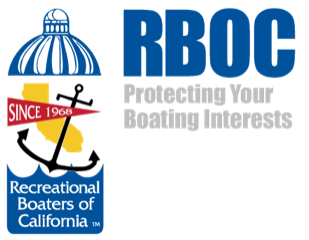RE: Bay Delta Conservation Plan
RBOC has submitted substantive comments on the Bay Delta Conservation Plan, stressing the plan's adverse impacts on recreational boating and urging full mitigation.
The Bay Delta Conservation Plan (BDCP or Delta Plan or plan) is a Habitat Conservation Plan (HCP) and a Natural Communities Conservation Plan (NCCP) developed by the U.S. Bureau of Reclamation and the California Natural Resources Agency. The plan proposes to dramatically and forever alter the flow and level of water through existing Delta waterways. The plan proposes to address this through a host of different proposed alternative measures and actions. The purpose of the plan being to endeavor to mitigate a host of existing endangered species impacts caused by the existing operational practice of exporting Delta water to other locations in California.
RBOC has monitored the BDCP planning process, representatives of RBOC have attended innumerable meetings, and RBOC has submitted comment letters since July of 2006 when the current plan commenced.
RBOC reiterated the previous comments we have submitted including our September 24, 2013 correspondence expressing concerns to each entity that was preparing a joint EIR/EIS for the Bay Delta Conservation Plan (BDCP) based upon the currently available draft Consultant Administrative Draft Environmental Impact Report (EIR) / Environmental Impact Statement (EIS). Those comments were attached and incorporated by reference.
The BDCP with a companion Environmental Impact Report/Environmental Impact Study (EIR/EIS) of upwards of 40,000 pages were released by the State of California for review on December 13, 2013 with a 120-day comment period ending June 13, 2014 [and subsequently extended to July 29, 2014].
It is evident to RBOC from review of the BDCP that implementation of the proposed actions and measures set forth in the plan and EIR/EIS will result in major short-term and long-term alternations and impacts to existing Delta waterways utilized by all types and sizes of recreational boats. Depending upon which actions and measures are implemented, there will be adverse impacts that constrain and in many instances even prohibit recreational boaters accessing and utilizing existing Delta waterways. This includes not only adverse impacts during the estimated decade-long construction period but thereafter as well depending upon which action measures and/or alternatives or segments of any are implemented at any time.
The plan in many ways results in irreversible changes to the Delta itself as well as to access and enjoyment of Delta waterways relevant to recreational boating and marinas and boat ramps visited by boaters and the general public. Unless mitigated to RBOC’s satisfaction, the actions by BDCP and EIR/EIS to modify any waterway is opposed by RBOC.
The BDCP needs to fully mitigate-for and to guarantee assurances-of reliable access to all Delta waterways proposed to be altered in any manner under the plan. This must include, for example, constructing boat locks wherever Delta waterways are proposed to have any barriers or gates – whether short-term or long-term - and that all boat locks be constructed and operated at no cost or charge to recreational boaters.
RBOC’s position is based upon the fact that the burden of producing a comprehensible HCP under federal law, supporting analysis and funding rests not on recreational boaters that navigate Delta waterways but that it is an obligation that rests solely upon the BDCP project proponents. The BDCP and EIR/EIS also are intended to serve as a NCCP under California law. In this regard, again RBOC asserts its objections to the BDCP and EIR/EIS as the plan fails to meet the provisions of NCCP.
Further concerns of RBOC that are not mitigated include, but are not limited to:
- The BDCP states that it will need authorizations of the Rivers and Harbors Act of 1899 (RHA) to perform many of its proposed actions to alter existing Delta waterways. The RHA requires authorization from Congress or the California state Legislature, and in addition to that of the U.S. Corps of Engineers in certain cases. The BDCP is defective as it does not specify when or how such authorization will occur and leaves to speculation whether it can attain necessary authorizations and permits for what it proposes to construct (in as much as the plan has such a wide variety of alternative measures and actions with no known specificity of outcomes).
- The BDCP’s effects on Delta flows and water levels: Changes in Delta flow and water levels as proposed in the plan have the potential to have a very significant and highly negative impact upon boats, marinas and boat ramps and other access point to the waters of the Delta. No analysis appears to exist in the BDCP or EIR/EIS as to operational impacts and the mitigations for having altered and reduced Delta water levels. Thus no analysis exists as to the severity this impact will have upon recreational boating, marinas and other water-based recreational uses of the Delta. Also, it is clear that if there are reduced water levels in the Delta this will also – from time to time - occur and have negative impact upon marinas and boats and access points along the Sacramento River and American River.
